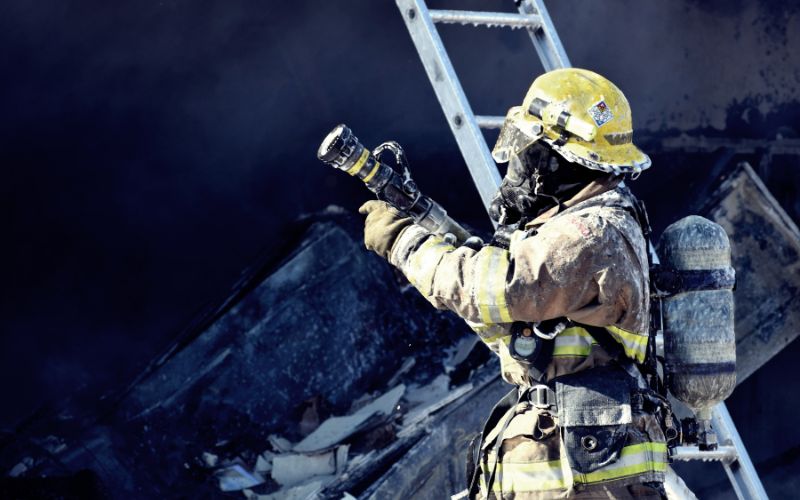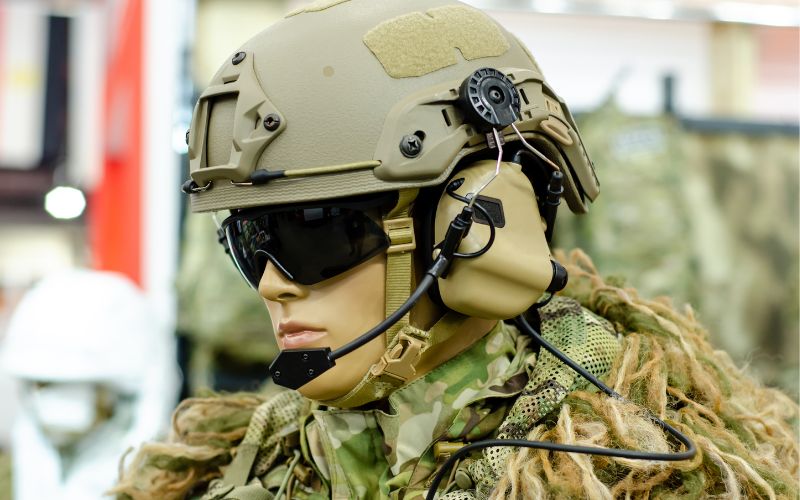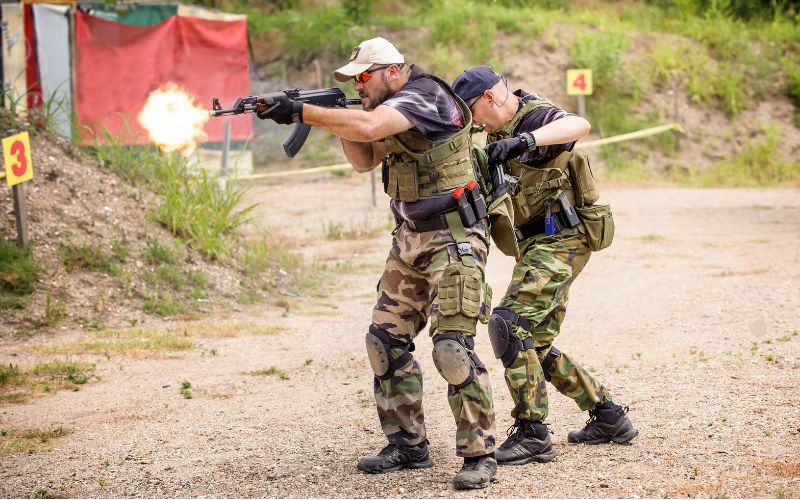How Ballistic Helmets Protect Lives in Combat and Defense

Personal protective equipment is important in dangerous environments such as combat, tactical operations, or extreme threats. A ballistic helmet is an important headgear that protects the head and increases the chances of survival in dangerous situations. For those in combat, one wrong step can lead to death, making it hard to estimate how many lives ballistic helmets have saved in the line of duty.
This article covers how ballistic helmets save lives: protecting against shots, blunt impact trauma, and more.
The Life-Saving Impact Of Ballistic Helmets
Ballistic helmets are not a piece of equipment but instead a lifesaver. The head is one of the most sensitive parts of the body, and any injury to the brain will have very deadly consequences. While in combat or tactical operations of various risk levels, personnel will be exposed to multiple fatal threats causing death or permanent damage. The design and materials used in ballistic helmets have been developed specifically to counter these threats, saving countless lives.
How Ballistic Helmets Save Lives:
Protection Against Ballistic Threats
The most critical feature of ballistic helmets is their ability to withstand high-velocity projectiles, such as bullets. These helmets use advanced materials to be constructed; typically, these include Kevlar, aramid fibers, and ultra-high molecular weight polyethylene (UHMWPE), which have very high strength and absorbing impact. During combat situations, a soldier or law enforcement officer may be facing threats from high-powered firearms such as rifles or handguns. A ballistic helmet of good design will stop or at least reduce the penetrating power of a bullet, thus not allowing fatal head injuries.
The helmet allows energy transfer from the projectile, spreading forces outward and reducing the probability of a penetrating wound.
Rebound of Shrapnel
Explosions are one of the main threats in modern combat and tactical operations. The force of the explosion throws out shrapnel that hurtles through the air at high velocity with lethal power. Ballistic helmets are designed to be taken against flying debris and shrapnel from grenades, IEDs, and mortars, as well as other explosive threats. The helmet acts as a barrier so that shrapnel may not hit the skull and cause significant damage. Even if it doesn’t prevent the projectile’s impact, it normally reduces the impact, giving the wearer a greater chance of survival and lower chances of long-term health issues.
Preventing Traumatic Brain Injuries

In addition to the direct impact of projectiles, ballistics helmets are also designed to prevent traumatic brain injuries. This is usually from blunt trauma, which includes impacts caused by bullets and shrapnel. Even when the bullet or shrapnel doesn’t pierce the helmet, the blow can still impart significant force into the skull, which may cause concussions, skull fractures, or brain swelling. Modern helmets feature inner suspension systems designed to absorb and dissipate such troops, thus preventing their direct transfer into the wearer’s head and dramatically reducing the chance of TBIs. This is important in combating because the effects of explosions or blunt impacts from debris are common.
Increased Survival In Tight Situations
Ballistic helmets often determine life and death in critical situations. For example, a soldier or police officer caught in powerful fire. In that situation, a helmet may give a person the life-saving time required to get to safety or the hospital. If the helmet doesn’t offer complete protection to the head and brain, the lesser severity of the injury will mean the person could stay conscious and functional enough to survive the event.
How Ballistic Helmets Are Designed To Save Lives
Ballistic helmets are specifically designed with several vital features to maximize this life-saving capability:
Materials and Technology
The primary materials of ballistic helmets are chosen to absorb impacts and resistance to penetration and keep the helmet as light as possible. Kevlar and aramid fibers are used in constructing helmets, suggesting their key strength-to-weight ratio. UHMWPE is a newer helmet design material that is lighter and more durable, providing better protection against projectiles and blunt force trauma. These materials ensure that helmets remain lightweight, reducing fatigue for wearers while providing high protection against common threats in combat and tactical operations.
Helmet Design and Fit
A helmet’s ability to save lives is not just about the materials used but also how it fits and protects the wearer. Modern ballistic helmets are designed to be comfortable, with adjustable straps and an inner padding system that distributes impact forces evenly. The helmet must remain securely placed during intense physical activity or movement, protecting the wearer’s head. Furthermore, the suspension system on the inside side of the helmet provides cushioning, thus having a lower incidence of concussions because impact forces that might come directly to the brain are absorbed.
Ballistic Rating

Ballistic helmets are tested intensively to qualify them as proof of the need to protect them. Helmets are rated on their capability and resistance to varying ballistic threat levels, including rounds from handguns to rifles. The NIJ standards of ballistic helmet performance set the requirement for the ballistic helmet to offer sufficient protection to the user based on its application. The ballistic rating is used to classify the types of rounds a helmet can handle and the degree of security that can be provided against high-velocity projectiles. Life savings are huge for helmets that meet or exceed the standards in combat and law enforcement scenarios.
Protection against Blunt Force Trauma
Another important design feature of ballistic helmets is their ability to protect against blunt force trauma. In explosive combat scenarios, the shockwave from explosions or heavy impacts can cause significant head injuries. A helmet with a robust impact-absorbing system can prevent skull fractures and other serious injuries that result from blunt force trauma. The helmet design distributes the impact over a wider area, reducing the chances of hurting the wearer.
Future Of Ballistic Helmets
As military, law enforcement, and civilian needs grow, so does ballistic helmet technology. Researchers now explore carbon nanotubes and graphene for ballistic helmets that would be stronger but lighter. Moreover, smart helmets that integrate sensor technology are on the horizon, and real-time health monitoring could be implemented on the wearers and all the vital information that medical teams may need once an injury happens. With the advancements, only the role of ballistic helmets in saving lives is expected to soar.
Verdict
Ballistic helmets are crucial in saving lives in all areas, from combat in the military to law enforcement. They help protect the head against a wide array of threats, such as bullets, shrapnel, and blunt force trauma. With advancing technology, ballistic helmets will only improve their effectiveness at protecting individuals and ensure that life-saving capabilities improve.
FAQs
How do ballistic helmets prevent gunfire?
Ballistic helmets are made from Kevlar or UHMWPE materials designed to absorb and distribute bullet energy. Depending on the helmet’s ballistic rating, it can stop or reduce the severity of injuries caused by handgun and rifle rounds, giving the wearer a significantly higher chance of survival.
Can a ballistic helmet stop all types of bullets?
No. Ballistic helmets are designed to stop certain types of ammunition, typically handgun and smaller rifle rounds. They will not stop high-powered armor-piercing rounds, however. These helmets are only as effective as their ballistic rating, which details the threats they are designed to protect against.
How do ballistic helmets prevent concussions?
Ballistic helmets have inner suspension systems that absorb and disperse the force of impacts, minimizing the direct transfer of energy to the skull. Such a design would help reduce the possibility of concussions and other TBI, protecting the skull against blunt force trauma.

